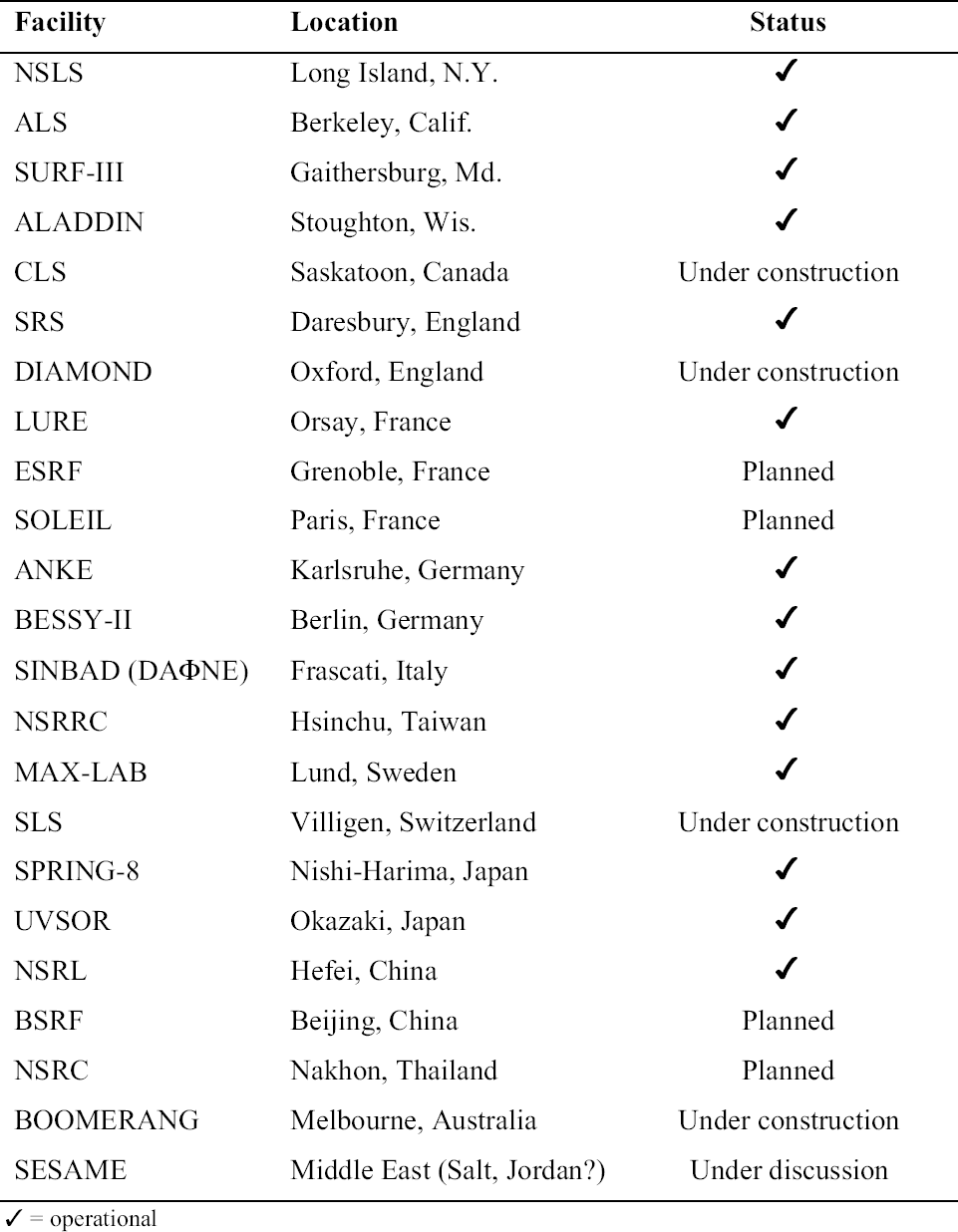INFRARED MICROSPECTROSCOPY USING A SYNCHROTRON SOURCE FOR ARTS-SCIENCE RESEARCH
GREGORY D. SMITH
NOTES
1. See, for example, the meeting proceedings of the Infrared and Raman Users Group (IRUG) at www.irug.org.
Table .
Locations of “User-Based” Synchrotron Facilities That Offer IRSR Microscopy or Are Currently Developing IRSR Microscopy Beamlines
 |
2. The broadband emission spans the hard x-rays to millimeter waves, although only those photons in the visible to far-IR regions are transmitted to the IRSR experimental station.
REFERENCES
Bell, S. E. J., E. S. O.Bourguignon, A. C.Dennis, J. A.Fields, J. J.McGarvey, and K. R.Seddon. 2000. Identification of dyes on ancient Chinese paper samples using the subtracted shifted Raman spectroscopy method.Analytical Chemistry72:234–39.
Bruni, S., F.Cariati, F.Casadio, and L.Toniolo. 1999. Identification of pigments on a XV century illuminated parchment by Raman and FTIR microscopies.Spectrochimica Acta A55:1371–77.
Burgio, L., R. J. H.Clark, and S.Firth. 2001. Raman spectroscopy as a means for the identification of plattnerite (PbO2), of lead pigments and of their degradation products.Analyst126:222–27.
Carr, G. L.2001. Resolution limits for infrared microspectroscopy explored with synchrotron radiation.Review of Scientific Instruments72:1–7.
Carr, G. L., P.Dumas, C. J.Hirschmugl, and G. P.Williams. 1998. Infrared synchrotron radiation programs at the National Synchrotron Light Source.Il Nuovo Cimento de Societa Italiana di Fisica D20:375–95.
Ferraro, J. R., ed.1982. The Sadtler infrared spectra handbook of minerals and clays. Philadelphia: Sadtler Research Laboratories.
Hecht, E., and A.Zajac. 1974. Optics. Reading, England: Addison-Wesley.
Jamin, N., P.Dumas, J.Moncuit, W. H.Fridman, J. L.Teillaud, G. L.Carr, and G. P.Williams. 1998. Highly resolved chemical imaging of living cells by using synchrotron infrared microspectrometry.Proceedings of the National Academy of Sciences USA95:4837–40.
Martin, M. C., N. M.Tsvetkova, J. H.Crowe, and W. R.McKinney. 2001. Negligible sample heating from synchrotron infrared beam. Applied Spectroscopy55:111–13
Martoglio Smith, P. A.2000. Infrared microspectroscopy mapping studies of packaging materials: Experiment design and data profiling considerations.Vibrational Spectroscopy24:47–62.
Miller, L. M., and T. J.Tague. 2002. Development and biomedical applications of fluorescence-assisted synchrotron infrared micro-spectroscopy.Vibrational Spectroscopy28:159–65.
Roy, P., J.-B.Brubach, P.Calvani, G.deMarzi, A.Filabozzi, A.Gerschel, P.Giura, S.Lupi, O.Marcouill�, A.Mermet, A.Nucara, J.Orphal, A.Paolone, and M.Vervloet. 2001. Infrared synchrotron radiation: From the production to the spectroscopic and microscopic applications. Nuclear Instruments and Methods in Physics Research Section A467–68:42–36
Salvad�, N., T.Pradell, E.Pantos, M. Z.Papiz, J.Molera, M.Seco, and M.Vendrell-Saz. 2002. Identification of copper-based green pigments in Jaume Huguet's Gothic altarpieces by Fourier transform infrared microspectroscopy and synchrotron radiation x-ray diffraction.Journal of Synchrotron Radiation9:215–22.
Smith, G. D., L.Burgio, S.Firth, and R. J. H.Clark. 2001. Laser-induced degradation of lead pigments with reference to Botticelli'sTrionfo d'Amore. Analytica Chimica Acta440:185–88
Smith, G. D., and R. J. H.Clark. 2001. Raman and FT-Raman microscopy in art history and conservation science.Reviews in Conservation2:92–106.
Sommer, A., L. G.Tisinger, C.Marcott, and G. M.Story. 2001. Attenuated total internal reflection infrared mapping microspectroscopy using an imaging microscope.Applied Spectroscopy55:252–56.
Veiga, J. P., and M. O.Figueiredo. 2002. Sixteenth century tubular glass beads: Non-destructive chemical characterization using synchrotron radiation XRF. X-Ray Spectrometry31:300–4
AUTHOR INFORMATION
GREGORY D. SMITH obtained an undergraduate education at Centre College of Kentucky in chemistry and anthropology and continued his studies in the sciences and archaeology at Duke University before earning his doctorate in chemistry. After holding postdoctoral positions at University College London and the National Synchrotron Light Source, he is currently the Samuel Golden Research Fellow at the National Gallery of Art in Washington, D.C., where his research interests include applications of chemistry and vibrational microspectroscopy to the analysis of artists' materials. Address: National Gallery of Art, Scientific Research Department, Washington, D.C. 20565; g-smith@nga.gov
|